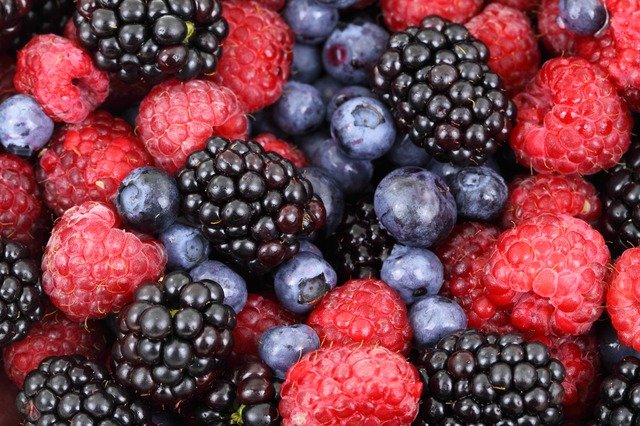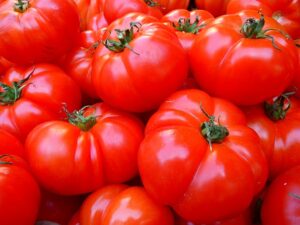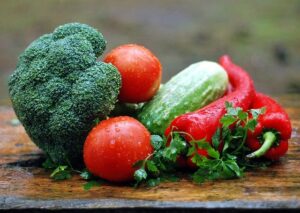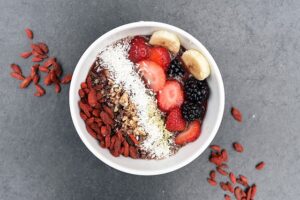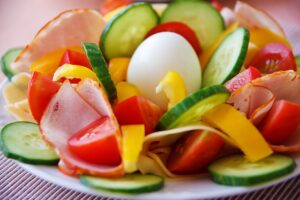Introduction
Eating an adequate amount of protein is essential for maintaining a healthy diet and supporting various bodily functions. The recommended daily intake of protein for an average adult is around 50 grams. However, some individuals, such as athletes, bodybuilders, or those looking to build muscle, may require a higher protein intake. In this article, we will explore how to eat 130 grams of protein a day, providing you with practical tips and strategies to reach this goal.
Calculating Your Protein Needs
Before diving into the strategies, it’s important to determine your specific protein needs. The general guideline for protein intake is 0.8 grams per kilogram of body weight. To calculate your protein needs in grams, you can multiply your weight in kilograms by 0.8. For example, if you weigh 70 kilograms, your protein needs would be 56 grams per day.
Incorporating Protein-Rich Foods
One of the most effective ways to increase your protein intake is by incorporating protein-rich foods into your diet. Here are some examples of foods that are high in protein:
Lean meats and poultry: Chicken breast, turkey, lean cuts of beef, and pork are excellent sources of protein.
Fish and seafood: Salmon, tuna, shrimp, and other seafood options are not only rich in protein but also provide omega-3 fatty acids.
Eggs: Eggs are a versatile and affordable source of protein. They can be enjoyed in various ways, such as boiled, scrambled, or in omelets.
Dairy products: Milk, yogurt, cheese, and cottage cheese are all good sources of protein. Opt for low-fat or Greek yogurt for higher protein content.
Legumes and beans: Lentils, chickpeas, black beans, and other legumes are not only high in protein but also provide fiber and other nutrients.
Nuts and seeds: Almonds, peanuts, chia seeds, and hemp seeds are excellent sources of plant-based protein.
Meal Planning and Preparation
To ensure you consume enough protein throughout the day, it’s helpful to plan and prepare your meals in advance. Here are some tips for meal planning:
Batch cooking: Prepare larger quantities of protein-rich foods, such as grilled chicken or baked tofu, and store them in the refrigerator or freezer for easy access.
Meal prepping: Divide your protein sources into individual portions and combine them with vegetables, whole grains, and healthy fats to create balanced meals.
Protein shakes or smoothies: Consider incorporating protein shakes or smoothies into your daily routine. Use protein powder, milk or plant-based milk, fruits, and vegetables to create a nutritious and protein-packed beverage.
Snacking on Protein
In addition to your main meals, incorporating protein-rich snacks can help you reach your daily protein goal. Here are some ideas for protein-packed snacks:
Greek yogurt with nuts: Enjoy a serving of Greek yogurt topped with almonds, walnuts, or other nuts for added protein and healthy fats.
Hard-boiled eggs: Prepare a batch of hard-boiled eggs and keep them in the refrigerator for a quick and protein-rich snack.
Protein bars: Look for protein bars that contain at least 20 grams of protein per serving. However, be mindful of added sugars and artificial ingredients.
Conclusion
Achieving a daily protein intake of 130 grams may seem challenging at first, but with careful planning and incorporating protein-rich foods into your meals and snacks, it is definitely achievable. Remember to calculate your specific protein needs based on your weight and adjust your diet accordingly. By following these strategies, you can meet your protein goals and support your overall health and fitness journey.
References
– Mayo Clinic: mayoclinic.org
– Healthline: healthline.com
– Academy of Nutrition and Dietetics: eatright.org

